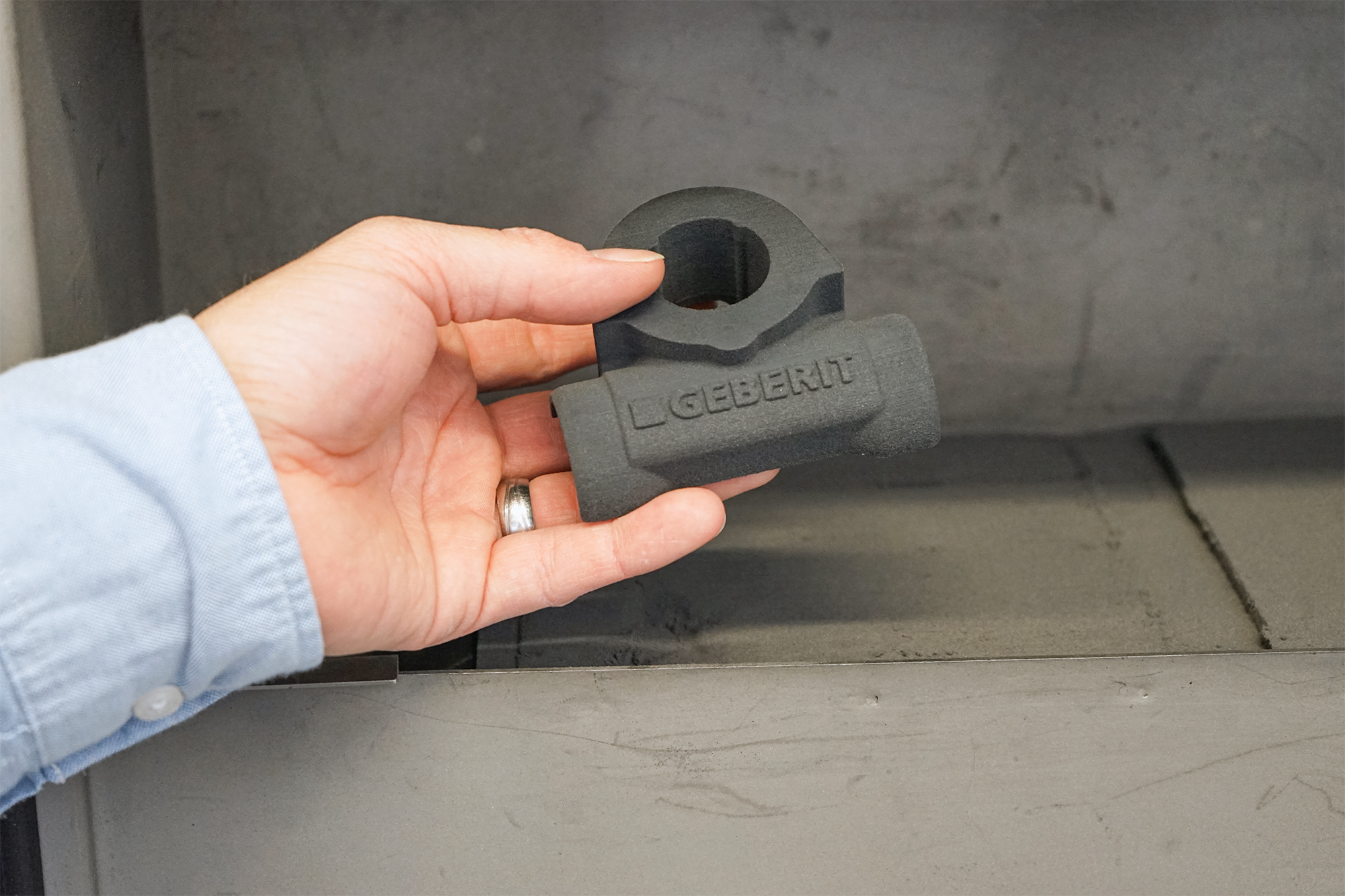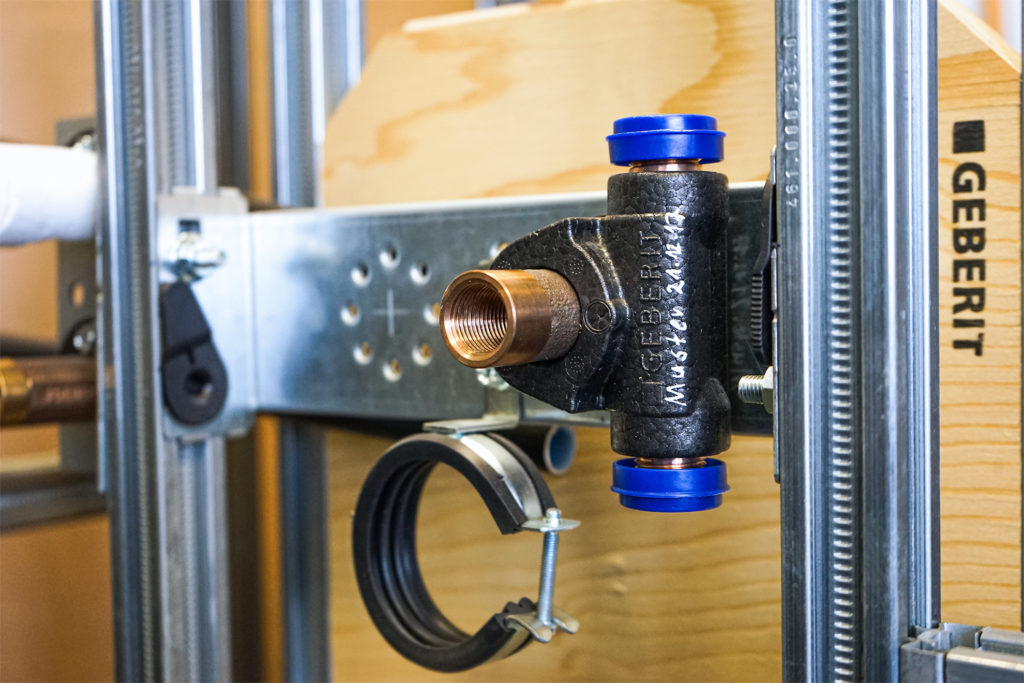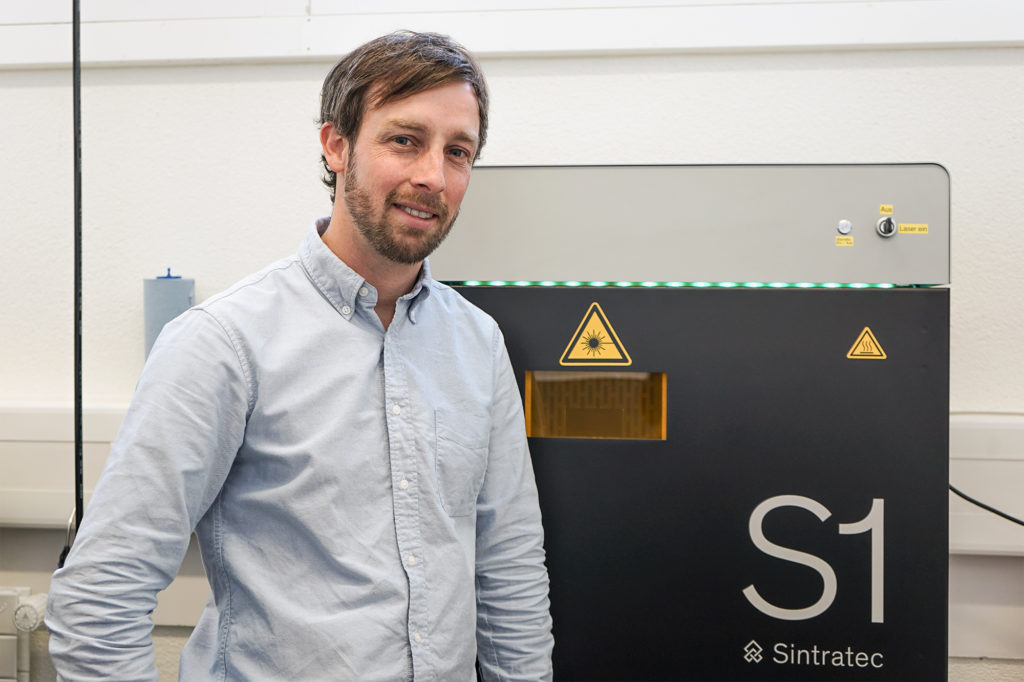Manufacturers of SLS 3D Printers increasingly show an extensive range of possible applications using SLS technology. So far, we have already unveiled applications in the fashion, art industry, and even in the medical industry.

Sintratec, a Switzerland-based manufacturer of SLS 3D Printers, shares today an interesting application of SLS 3D Printing in the sanitary sector. The Geberit Group, a leading producer of sanitary parts in Europe, operates 29 production plants in over 50 countries. In order to launch a new product on the market, it must meet a wide range of requirements. Since 2016, the company has been using Sintratec S1 for design optimization and material testing in its prototyping laboratory.
In addition to SLS 3D Printing, it should be noted that MJF, FDM & even SLA technologies are used throughout the year to explore new design variants. The company can print about 16 000 parts each year. However, among all these products, SLS 3D Printing recently stood out from this crowd for the production of a recent product concept.
The flexible sheathing of a valve connection angle

The sheathing of a valve connection angle is not the easiest task to perform in sanitary applications. Indeed, due to the fact that it must be installed in a confined space, the sheathing must be enough flexible & resistant to withstand heat.
With regards to the explored solutions, Roger Baggenstos, Geberit development engineer in the Piping Systems division, explains: “Supply systems are insulated so that as little heat as possible is radiated from the hot water pipe to the cold-water pipe – in that way, the hot water remains warm and the cold-water cold. This is also necessary to comply with the normative requirements. For the valve connection angle as an example, we use expanded polypropylene, EPP for short.” The foamed plastic is stretchable and mechanically strong at the same time.
As a result, those stringent requirements lead to the creation of new designs for water supply lines in order to keep the pipe distance with stagnant water as low as possible. And that’s exactly where SLS 3D printing comes into play.
In this specific application, it wasn’t only about choosing SLS technology, it was about choosing the right technology and the right material.
The functional prototypes

Geberit uses Sintratec TPE material on the manufacturer desktop S1 SLS 3D Printer. After the manufacturing, the coating was immediately tested in a real construction situation.
The engineers performing this test explained that they could easily move the sheathing parts around the fitting connection and fix it as required by the snap mechanism.
According to Hugo Arnold, head of the prototyping laboratory at Geberit : “Prototypes produced with other 3D printing processes did not show the required flexibility and mechanical strength. The decision to manufacture the components on the Sintratec S1, however, depended on other factors.” More importantly, Sintratec’s SLS 3D Printing systems were ideal not only because of the application, but also with regards to the complex material change processes: “On the Sintratec S1, which has a small printing area, I can immediately carry out a test print with relatively little powder,” continues Hugo Arnold.
This application shows the competitive advantage of SLS 3D Printing compared to other technologies. More importantly, it also raises attention on the ability to choose the right technology for the right application.
You can now post free of charge job opportunities in the AM Industry on 3D ADEPT Media.
For further information about 3D Printing, follow us on our social networks and subscribe to our newsletter : Facebook, Twitter, LinkedIn & Instagram !
Would you like to be featured in the next issue of our digital magazine? Send us an email at contact@3dadept.com
https://pagead2.googlesyndication.com/pagead/js/adsbygoogle.js
(adsbygoogle = window.adsbygoogle || []).push({});





